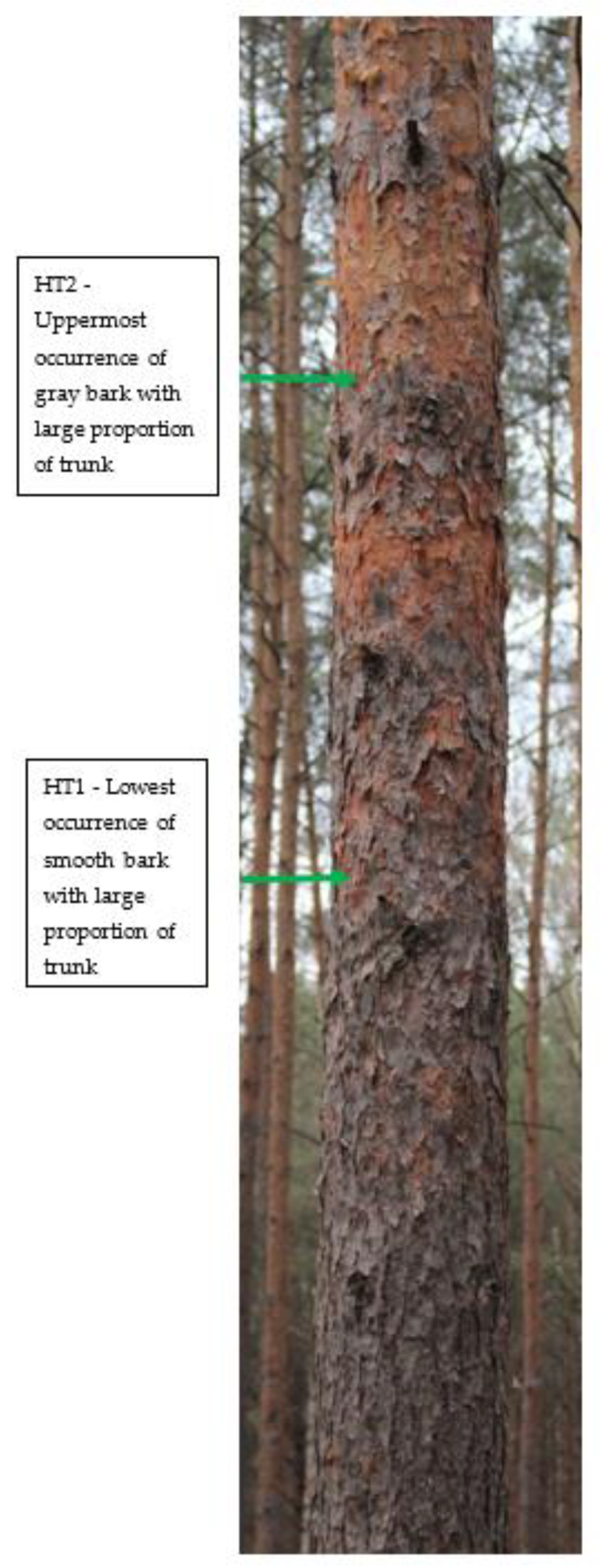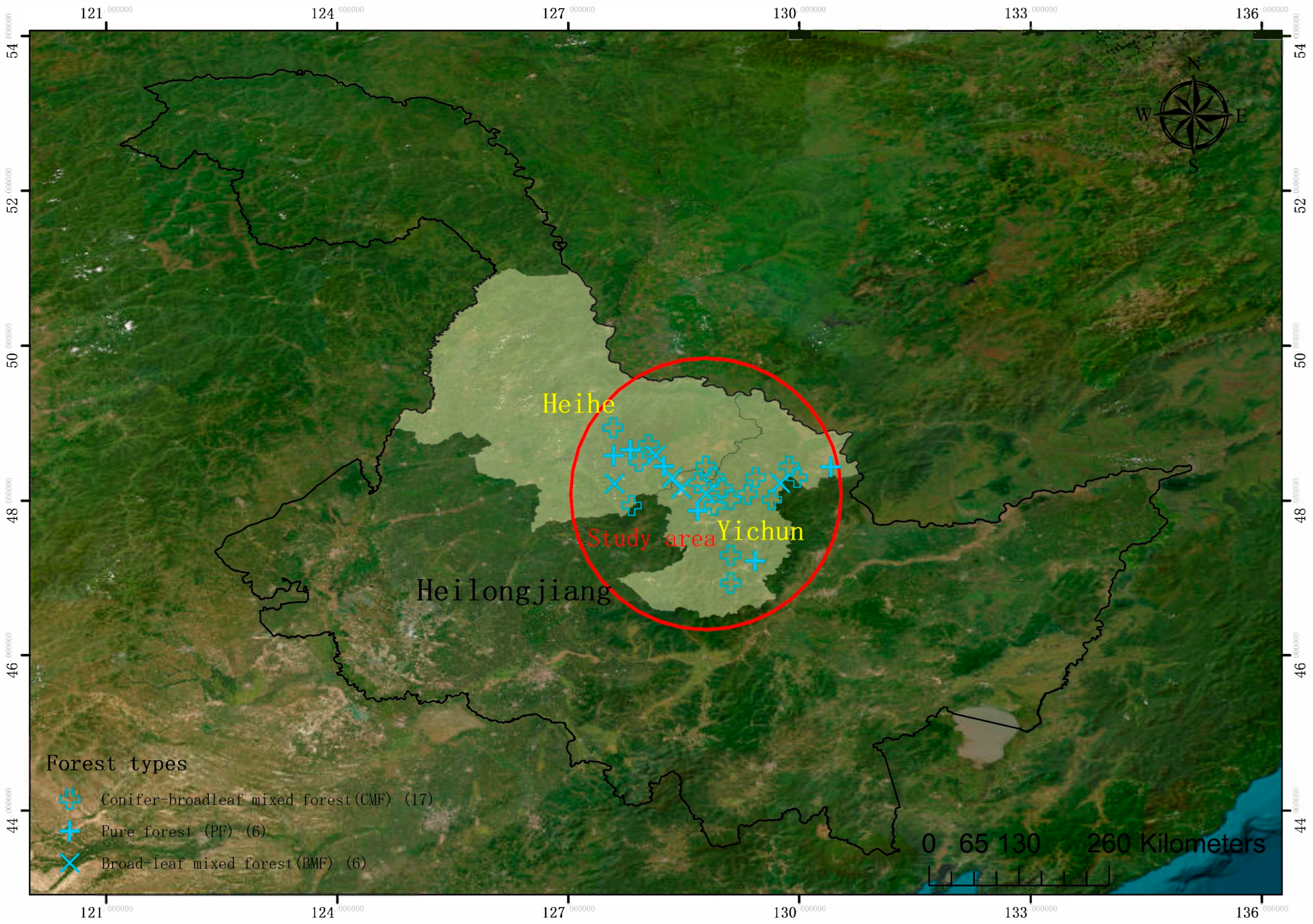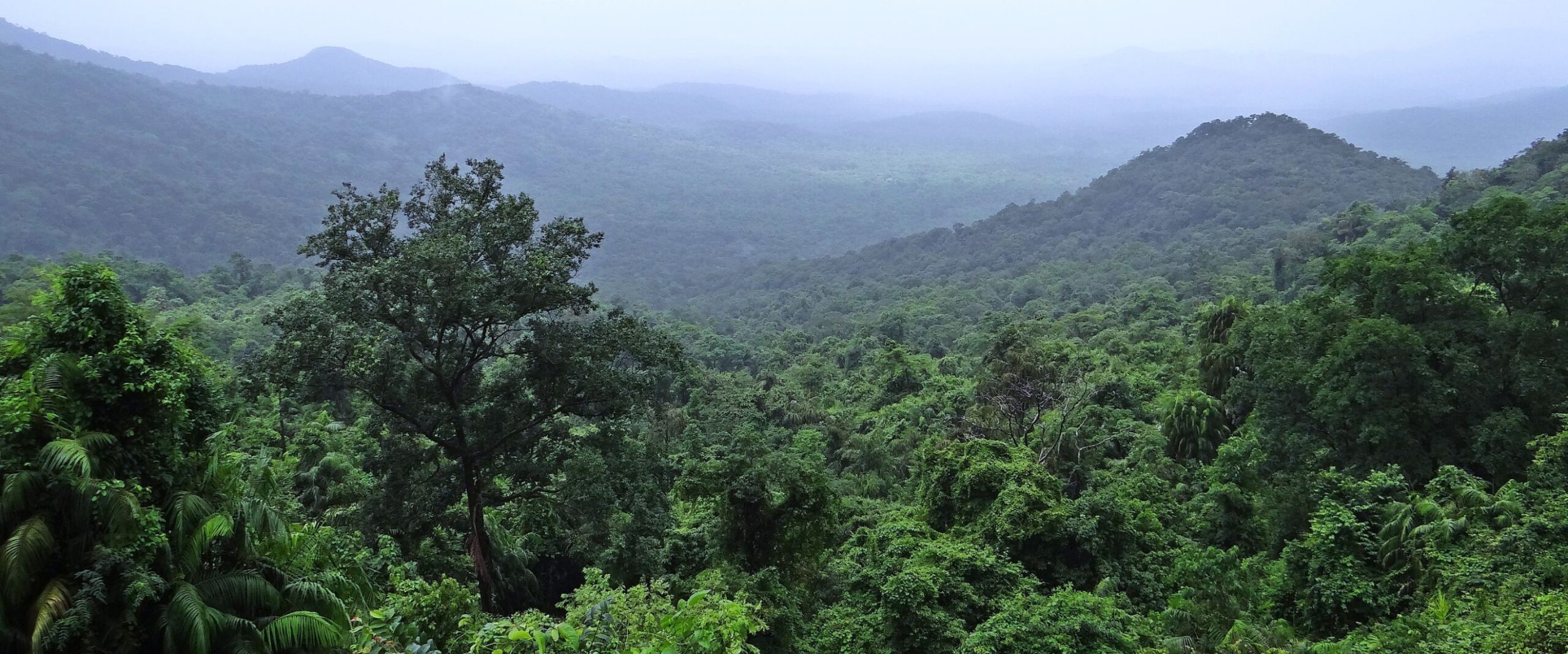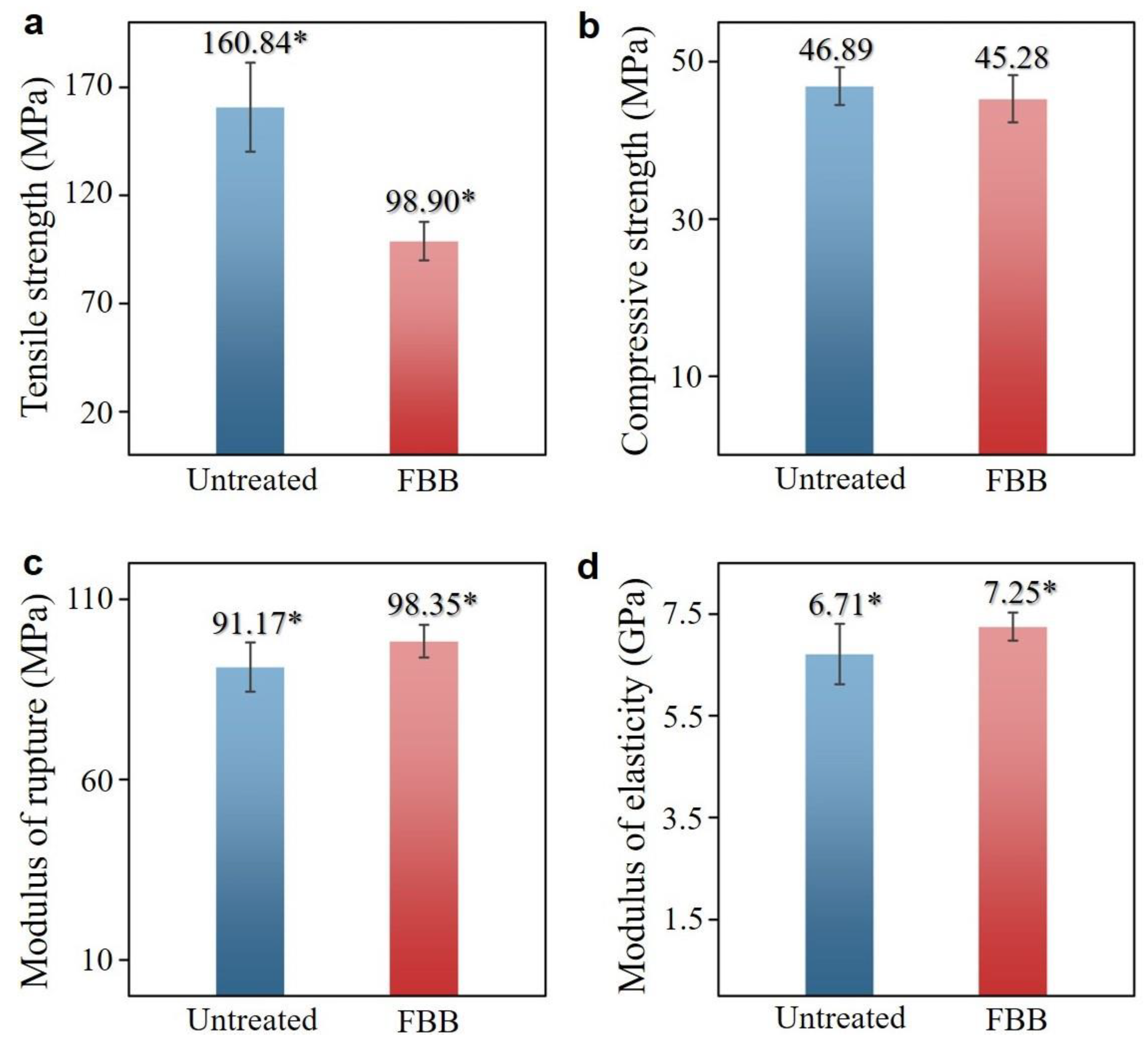
Forests, Free Full-Text
4.7 (146) In stock

4.7 (146) In stock
The estimation of forest biomass is gaining interest not only for calculating harvesting volumes but also for carbon storage estimation. However, bark (and carbon) compounds are not distributed equally along the stem. Particularly when looking at Scots pine, a radical change in the structure of the bark along the stem can be noted. At the bark transition area, the bark changes from thick and rough to thin and smooth. The aim of our study was (1) to analyze the height of the bark transition area where the bark structure changes and (2) to analyze the effect of cardinal direction on the bark thickness. Regression analyses and forward selection were performed including measured tree height, DBH, bark thickness, crown base height and upper and lower heights of the bark transition areas of 375 trees. While the cardinal direction had no effect on bark thickness, DBH was found to have a significant effect on the heights of the bark transition areas, with stand density and tree height having a minor additional effect. These variables can be used to estimate timber volume (without bark) with higher accuracy and to predict the carbon storage potential of forest biomass according to different tree compartments and compounds.

Take Action — Free To Grow in Forestry

How Businesses Are Creating Landscapes That Are

Forests, Free Full-Text

Forests, Free Full-Text

Forests of Life Bhopal - Azim Premji University

The amended green law is full of red flags - Supreme Court Observer

Stream episode Forests that keep fires small, and how they do it
M-5252 - Hints for campers in the national forests - Biodiversity

Home Forest Stewardship Council

Bamboo node effect on the tensile properties of side press, Bamboo Lumber